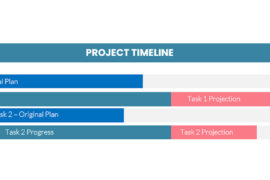 If projects were always predicable we wouldn’t need project managers. We’d just authorize the project based on what estimators had determined and then on the expected finish date, we’d pick up the completed project with the actual costs exactly meeting the projected costs.
If projects were always predicable we wouldn’t need project managers. We’d just authorize the project based on what estimators had determined and then on the expected finish date, we’d pick up the completed project with the actual costs exactly meeting the projected costs.
Sadly, that’s not the case.
The work of project managers is so important because life is so unpredictable.
In the face of almost everything challenging in our world, we have come to turn to technology to fix our problems. We expect that just like a calculator was able to give us the answers to complex mathematical problems in instants rather than the much longer time it would take us to do it manually, technology will solve everything for us at the push of a button.
So it’s probably no surprise that we often give so much attention to the automation of project management in the hope that it alone can solve our project problems. Estimate not correct? Better estimating software will fix that. Quality of the project not up to standards? Better QA Software will fix that. Project late? You need better project scheduling software. It will fix that. Project overbudget? Cost Control software will fix that.
If only it were so.
In each wave of new technology we count on it to fix our challenges. When PCs took over from mini and mainframe computers, early adopters of the new technology released PC-based project management software. The license costs were 5% of the mini computer equivalents and project management software became available to almost everyone. That will fix project management problems forever, we said to ourselves.
The Internet let everyone exchange data instantly from almost anywhere in the world. “Ah, that will do the trick,” we said. Project Management data could be freely exchanged in an instant.
New technology waves that are more recent include the migration of many software systems from PCs and internal on-premise servers to Internet subscription systems in the “Cloud”. Now even the installation and maintenance of software won’t hold us up. We will be able to deploy enterprise project management in minutes instead of weeks as we used to do.
Mobile Smart Phones and Tablets use the vast cell phone network to connect our personnel to our centralized project systems 24 hours a day, 7 days a week. Now even the commute to work won’t be a barrier to our project management.
But all of these wonders of technology have a massive underlying caveat.
Project Management is a process.
A process.
If we say that technology is the only thing that’s important in our project management environment, then what about training? In the 1970s, project management systems would have cost hundreds of thousands of dollars and been available only to larger organizations who could justify the purchase. The training that went into making sure that the technology would produce dividends was extensive. It was not at all surprising to find people in weeks of training to follow the new project management process and to ensure that the use of the new software supported the process exactly.
With project management technology having been pushed to everyone, many have ignored the critical impact of the underlying process. I have been asked in the past how long after subscribing to project software for the organization reports from it would be available on mobile devices. It was a tough question. Instantly could be the answer. But that would be unfair. The question itself has hidden expectations.
“Would you expect the data to be accurate?” I asked.
“Of course!” came the reply.
“Would you expect unapproved data to be visible?” I continued.
“No, I don’t think so,” was the less certain answer.
“Would you expect to see data mixed with every project in the entire organization, even those for individuals?” I asked.
“No, only the projects of interest to me,” came the reply.
“Then it’s going to take some time,” I answered. “The data you are hoping for in your report will require approval processes, workflow, filtering, definitions of what data to include and how to distinguish it from other data and an agreement and understanding from everyone to work along similar standards.”
This was deeply disappointing to the executive who had already authorized the subscription to a large enterprise project management system. They also had not allowed any time to create that process, to train their personnel or to maintain the process over time.
It’s a challenging combination. Not only does a project management process need to be defined, if you are intending to use that process across all projects and all project personnel, then there is collaboration required as well as a monitoring of the process in some manner that will maintain what is important in it.
Some suggest that creating a central PMO (Project Management Office) will fix that issue. But a PMO can be many things in many places. Just the creation of a PMO will often reveal that the organization has internal challenges to sharing project authority and that there are many opinions on how to manage projects. In some organizations, unseen internal incentives to be successful in one’s own project can run counter to cooperating with others so they too are successful.
As someone who works in the project management automation industry, you might think that I would be a forceful voice for automate first and think about how to use the software later but nothing could be further from the truth. Like many in my industry, we have found that the most successful clients are those who use software like our own to enhance and improve the project management process, not replace it.





